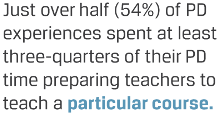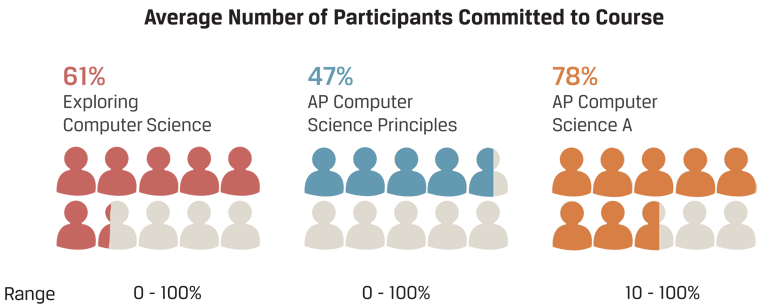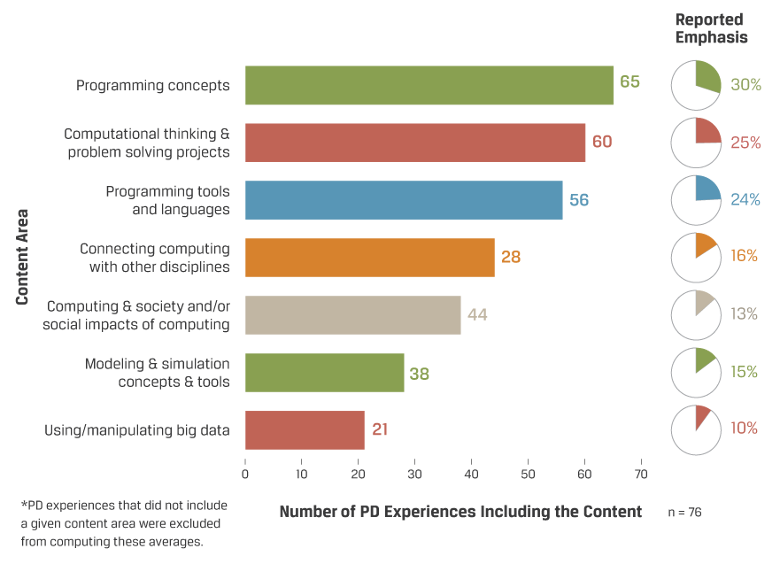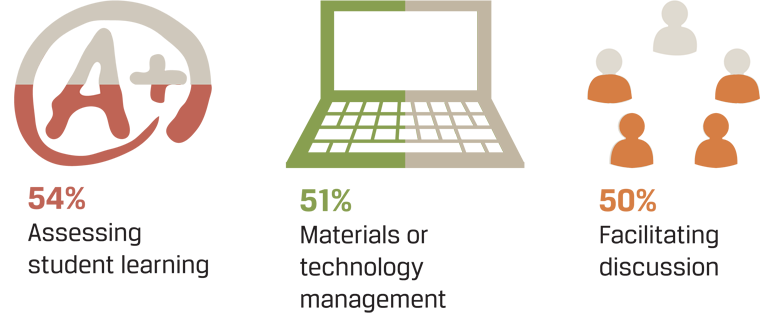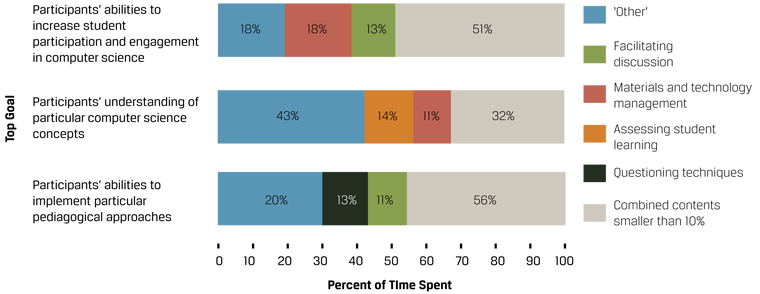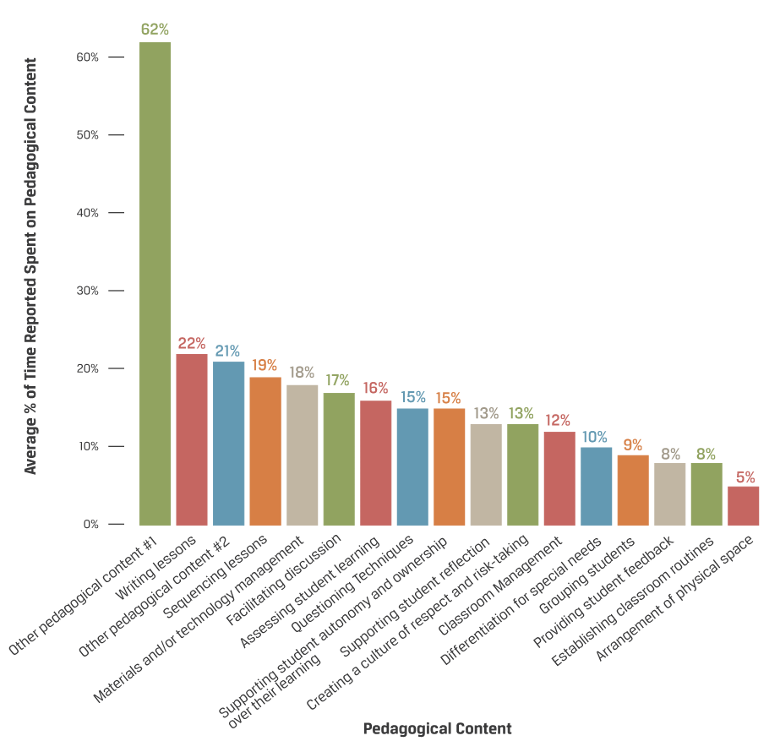The survey yielded a rich, wide ranging set of findings. However, when considered together, those findings lead to three main conclusions:
- As a field, computer science education professional development needs to move toward more coherence.
- As a field, computer science education professional development needs to move toward better fitting the needs of the groups that will comprise the computer science teacher workforce.
- As a field, computer science education professional development needs to focus more on teaching and learning in the classroom.
This table synthesizes all of the summary tables in this report. It communicates some of the issues that emerged from the data and offers recommendations for future goals for computer science education professional development. As with the other tables in this report, note that these recommendations are framed as “Less” and “More” intentionally, recognizing that no single approach or model of professional development is a fit for every situation. Further, it is important to acknowledge that there is work to be done to move the field from “Less” to “More” and that that work will take some time. Finally, the recommendations are grounded in some of the generally accepted principles about professional development that reside in the literature. For references, see the “Resources” section of this report.
| Issue |
Less |
More |
| Relevance and Fit |
University developed professional development |
University and school co-developed professional development |
| Priority |
Higher education driven |
School and district driven |
| Investment |
Externally funded professional development |
Co-funded professional development |
| Class Size |
--- |
Relatively small numbers of participants |
| Audience |
Heterogeneous groups |
Homogenous groups |
| Recruitment |
Casting a broad net for participants in PD experiences |
Targeting participants and audience for PD experiences |
| Exposure and Dosage |
Single opportunities with little follow-up |
Continuing exposure to professional development experiences for more hours over longer periods of time |
| Isolation |
Professional development out of school |
School based and/or job-embedded professional development |
| Unreached |
--- |
Providing opportunities when they don't already exist |
| Fit |
Widely varied disciplinary and pedagogical content |
Disciplinary and pedagogical content aligned to goals and target audience |
| Pedagogical Understanding |
Vaguely defined pedagogical content |
Clarified pedagogical strategies and specified classroom applications |
| Classroom Application |
Isolated content and approaches |
Content and pedagogy directly tied to teachers' instructional goals, curricular frameworks and/or courses |
| Underrepresented |
--- |
Explicit attention to increasing access and equity |
| Educating Teachers |
--- |
Opportunities for small group discussion and reflection |



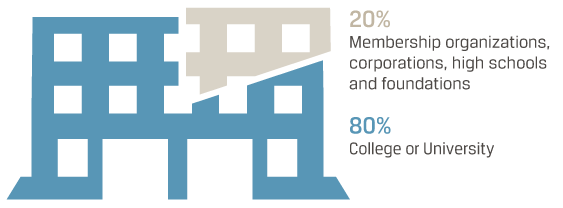 The vast majority of respondents (80%) reported their organization to be a college or university and 59% of respondents identified themselves as college/university faculty. The 20% of respondents who did not identify their organization as a college or university reported being from membership organizations, corporations, high schools, and foundations.
The vast majority of respondents (80%) reported their organization to be a college or university and 59% of respondents identified themselves as college/university faculty. The 20% of respondents who did not identify their organization as a college or university reported being from membership organizations, corporations, high schools, and foundations.
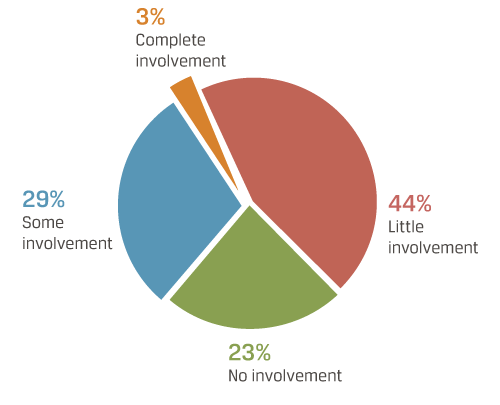
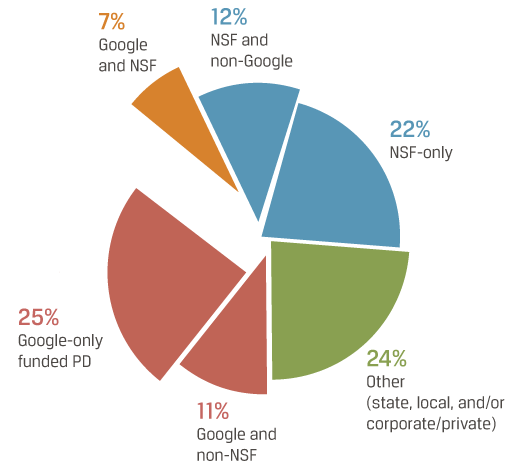 Google and the National Science Foundation (NSF) funded the majority of professional development experiences reported in the survey. The professional development funding sources were grouped into five categories: Google-only funded professional development (25%), NSF-only funded professional development (22%), Google plus NSF funded professional development (7%), Google plus non-NSF funded professional development (11%), NSF plus non-Google funded professional development (12%), and “All Other Funders” including state, local, and/or corporate/private funds (24%).
Google and the National Science Foundation (NSF) funded the majority of professional development experiences reported in the survey. The professional development funding sources were grouped into five categories: Google-only funded professional development (25%), NSF-only funded professional development (22%), Google plus NSF funded professional development (7%), Google plus non-NSF funded professional development (11%), NSF plus non-Google funded professional development (12%), and “All Other Funders” including state, local, and/or corporate/private funds (24%).
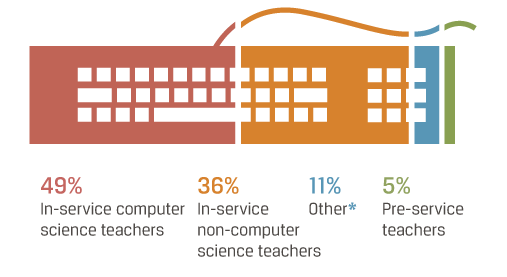 More than half (51%) of the participants were not full time in-service computer science teachers. Of these, the largest group was in-service non-computer science teachers at 36%. The remaining categories of participants were “other” (11%) and pre-service teachers (5%). Of those 11% identified as “other,” the top three categories included industry professionals, retired teachers and informal education providers.
More than half (51%) of the participants were not full time in-service computer science teachers. Of these, the largest group was in-service non-computer science teachers at 36%. The remaining categories of participants were “other” (11%) and pre-service teachers (5%). Of those 11% identified as “other,” the top three categories included industry professionals, retired teachers and informal education providers.
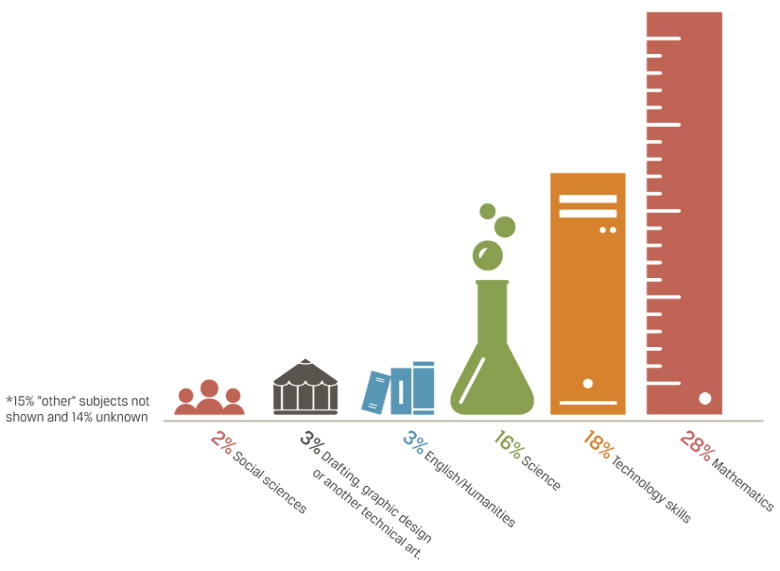

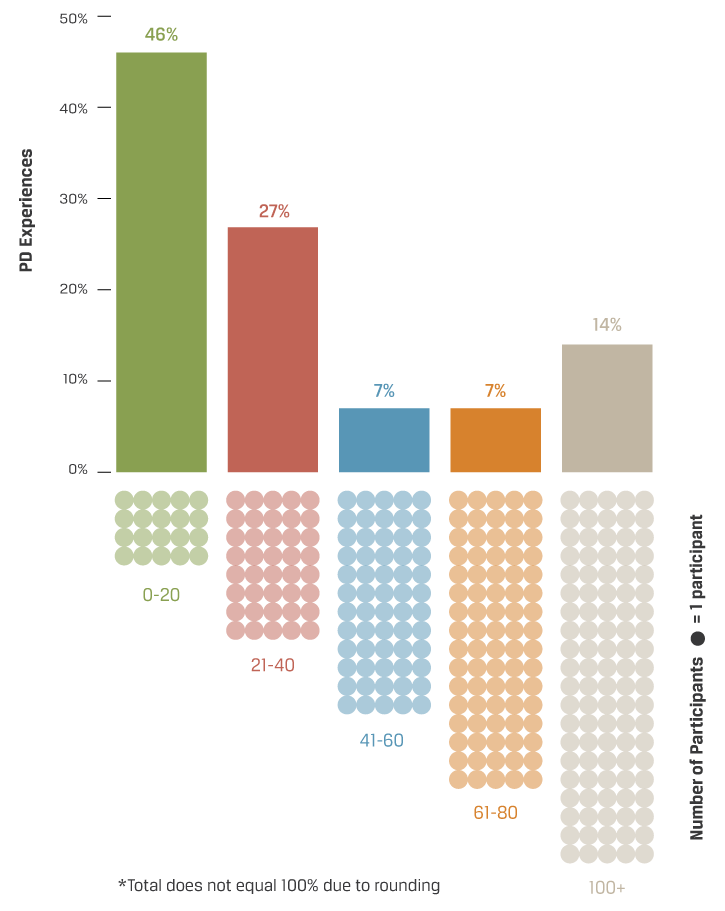
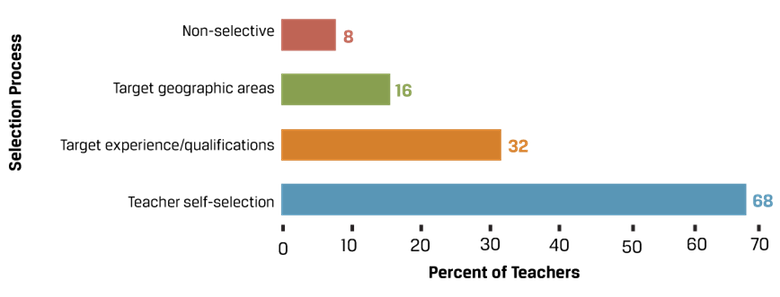
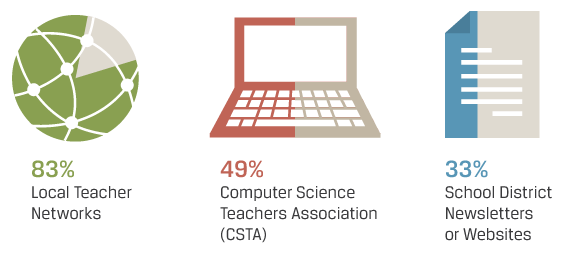 A large majority of professional development providers (83%) reported using local teacher networks to publicize information about the computer science professional development experience. The next most common means providers identified was CSTA (49%) and school district newsletters or websites (33%). Sixty-four percent of providers chose “other.” The survey did not provide an opportunity for explanation of “other” on this item.
A large majority of professional development providers (83%) reported using local teacher networks to publicize information about the computer science professional development experience. The next most common means providers identified was CSTA (49%) and school district newsletters or websites (33%). Sixty-four percent of providers chose “other.” The survey did not provide an opportunity for explanation of “other” on this item.

 Forty-five percent of the high school computer science professional development experiences paid participants to attend and complete the experience, while 55% did not.
Forty-five percent of the high school computer science professional development experiences paid participants to attend and complete the experience, while 55% did not.
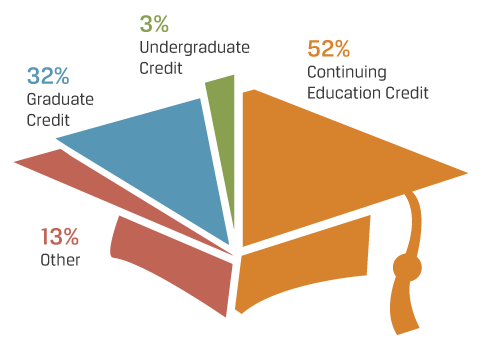 Forty-one percent of high school computer science professional development experiences offered credits of varying kinds for attending and completing the professional development experience. In turn, 59% did not. Of those that did offer academic credit to participants, about half (52%) offered continuing education credit, about a third (32%) offered graduate credit, 3% offered undergraduate credits, and 13% offered other forms of credit including clock hours and community college credit.
Forty-one percent of high school computer science professional development experiences offered credits of varying kinds for attending and completing the professional development experience. In turn, 59% did not. Of those that did offer academic credit to participants, about half (52%) offered continuing education credit, about a third (32%) offered graduate credit, 3% offered undergraduate credits, and 13% offered other forms of credit including clock hours and community college credit.
 Eighty percent of respondents reported that they provided participants with “other” kinds of incentives (not money or credits) or support when they attended and completed the professional development experience. These incentives included classroom materials (textbooks, lesson plans, handouts and worksheets, LEGO
Eighty percent of respondents reported that they provided participants with “other” kinds of incentives (not money or credits) or support when they attended and completed the professional development experience. These incentives included classroom materials (textbooks, lesson plans, handouts and worksheets, LEGO Of the respondents who reported doing an “in person summer workshop” with follow up, the two most common kinds of follow up were “in person meeting only” (28%) and “in person meeting” with phone calls, online meetings and mail (28%). The next most common kind of follow up was “mail only” (17%).
Of the respondents who reported doing an “in person summer workshop” with follow up, the two most common kinds of follow up were “in person meeting only” (28%) and “in person meeting” with phone calls, online meetings and mail (28%). The next most common kind of follow up was “mail only” (17%).

